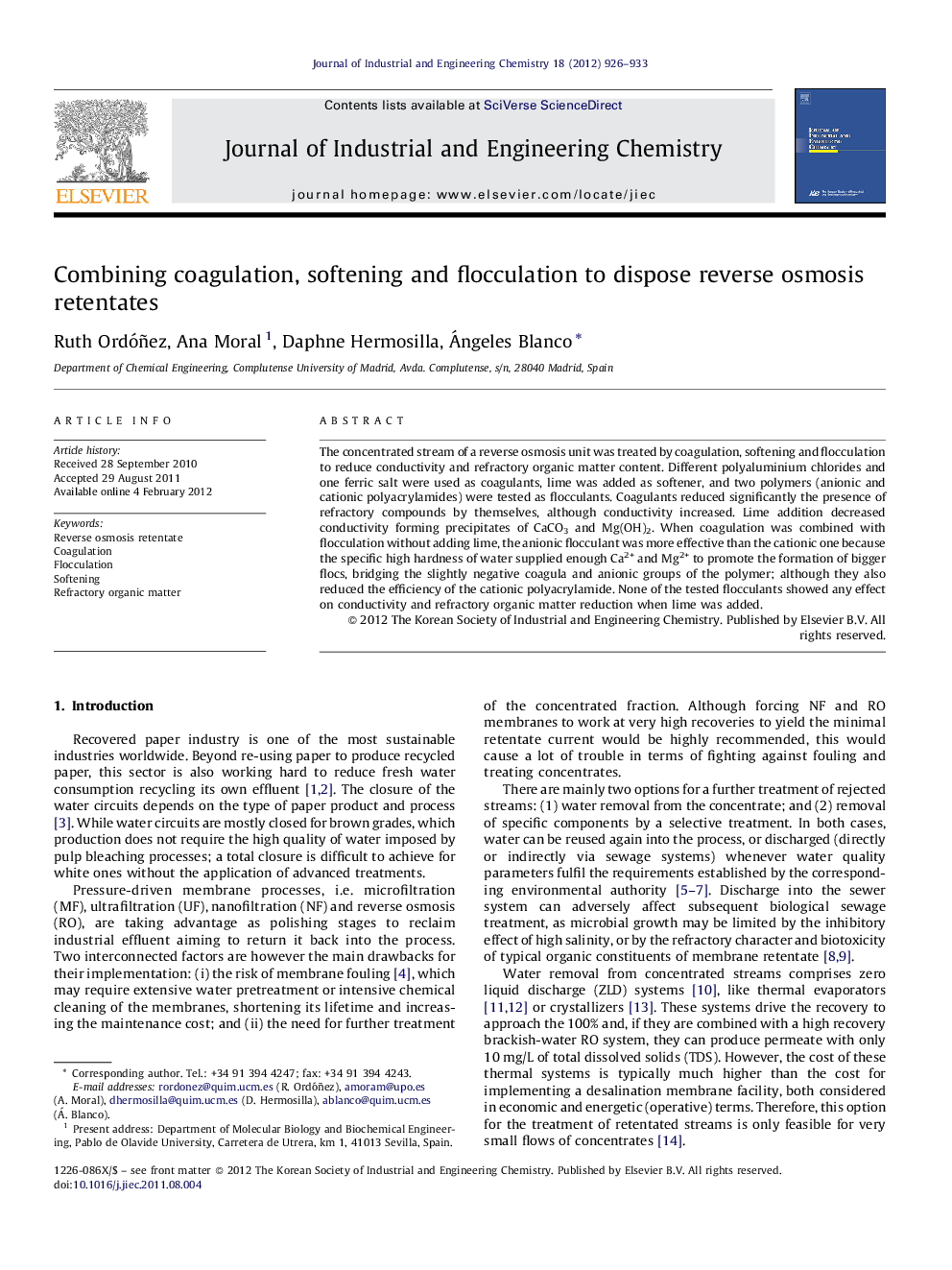| Article ID | Journal | Published Year | Pages | File Type |
|---|---|---|---|---|
| 227978 | Journal of Industrial and Engineering Chemistry | 2012 | 8 Pages |
The concentrated stream of a reverse osmosis unit was treated by coagulation, softening and flocculation to reduce conductivity and refractory organic matter content. Different polyaluminium chlorides and one ferric salt were used as coagulants, lime was added as softener, and two polymers (anionic and cationic polyacrylamides) were tested as flocculants. Coagulants reduced significantly the presence of refractory compounds by themselves, although conductivity increased. Lime addition decreased conductivity forming precipitates of CaCO3 and Mg(OH)2. When coagulation was combined with flocculation without adding lime, the anionic flocculant was more effective than the cationic one because the specific high hardness of water supplied enough Ca2+ and Mg2+ to promote the formation of bigger flocs, bridging the slightly negative coagula and anionic groups of the polymer; although they also reduced the efficiency of the cationic polyacrylamide. None of the tested flocculants showed any effect on conductivity and refractory organic matter reduction when lime was added.
